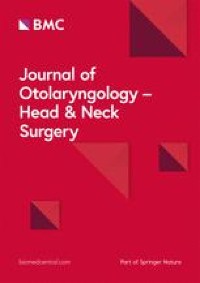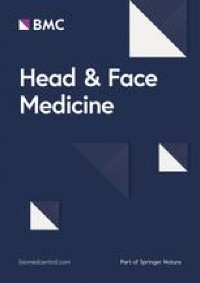|
Κυριακή 28 Φεβρουαρίου 2021
Workhorse Free Functional Muscle Transfer Techniques for Smile Reanimation in Children with Congenital Facial Palsy: Case Report and Systematic Review of the Literature
Perceived utility of electronic noses in patients with loss of smell
|
Thyroid chondroplastic flap for resection of laryngoceles
|
Robotic Posterior Capsule Polishing by Optical Coherence Tomography Image Guidance
|
Relationship of triceps aponeurosis with radial nerve in anterior compartment of the arm
|
Impact of subspecialty training on management of laryngopharyngeal reflux: results of a worldwide survey
|
Comparison of miRNA expressions among benign, premalignant and malignant lesions of the larynx: could they be transformation biomarkers?
|
Identification of E2F transcription factor 7 as a novel potential biomarker for oral squamous cell carcinoma
|
Preparation and validation of cyclodextrin-based excipients for radioiodinated hypericin applied in a targeted cancer radiotherapy
|
Remote medulla ablongata ventral acute subarachnoid hemorrhage following cervical spinal surgery: A case report
|
Early transcriptional changes after UVB treatment in atopic dermatitis include inverse regulation of IL‐36γ and IL‐37
|
Δημοφιλείς αναρτήσεις
-
Abstract Kenaf is a multipurpose crop, but a lack of genetic information hinders genetic and molecular research. In this study, we aimed t...
-
As demonstrated by the market reactions to downgrades of various sovereign credit ratings in 2011, the credit rating agencies occupy an impo...
-
HPV vaccine now funded for boys Scoop.co.nz “Most countries who have to date introduced HPV vaccine have focused on the cervical canc...
-
Multi-organ segmentation of the head and neck area: an efficient hierarchical neural networks approach Abstract Purpose In radiation therapy...
-
ORIGINAL ARTICLES Cyclooxygenase-2 and estrogen receptor-β as possible therapeutic targets in desmoid tumors p. 47 Rasha A Khairy DOI :10....
-
Lichtenstein intervention is currently the classic model of the regulated treatment of inguinal hernias by direct local approach. This “tens...
-
Umbrella reviews: what they are and why we need them Cystic echinococcosis in unaccompanied minor refugees from Afghanistan and the Middle E...
-
Spindle cell/pleomorphic lipoma is an uncommonly encountered benign neoplasm that is usually found in the subcutaneous tissues. Rare cases r...
-
Related Articles New alkylresorcinol metabolites in spot urine as biomarkers of whole grain wheat and rye intake in a Swedish middle-a...




